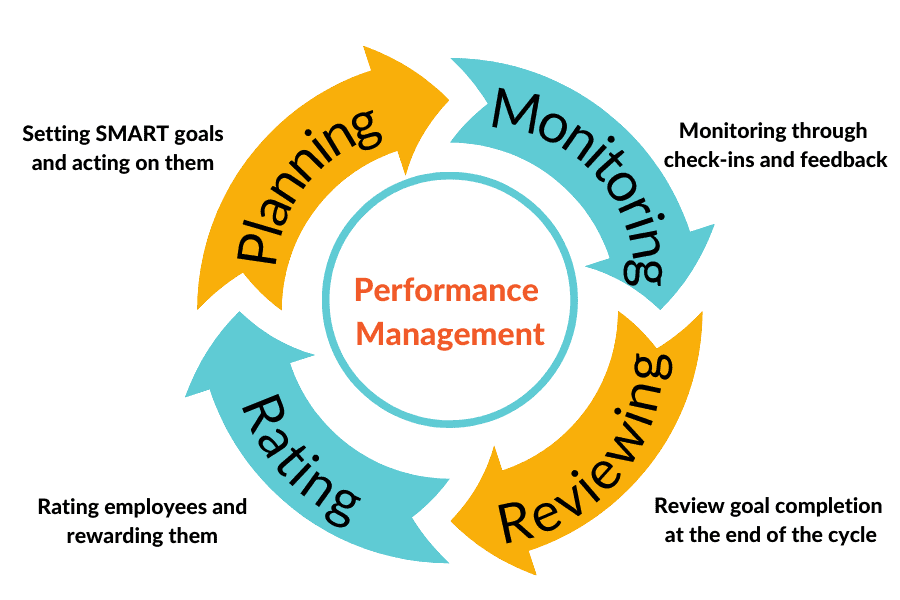In the current business environment, organizations continuously seek strategies to boost employee productivity and achieve business objectives. One such strategy is leveraging performance management software that integrate robust goal-setting features. These tools not only streamline performance evaluations but also act as catalysts for fostering a culture of accountability and continuous improvement. This article delves into how goal-setting features in performance management software drive productivity and empower organizations to reach their full potential.
The Science Behind Goal-Setting
The concept of goal-setting as a productivity driver is rooted in psychology. Edwin Locke’s Goal-Setting Theory posits that specific and challenging goals, combined with appropriate feedback, lead to higher performance. Goals provide clarity, focus, and motivation by giving individuals a concrete target to strive for. When integrated into performance management software, these principles create a structured framework for employees and teams to align their efforts with organizational priorities.
Aligning Individual Goals with Organizational Objectives
One of the standout features of modern performance management software is the ability to align individual goals with overarching organizational objectives. This alignment ensures that every team member understands how their contributions impact the bigger picture.
For instance, tools with cascading goal-setting functionality allow organizations to break down strategic objectives into actionable tasks. This approach fosters transparency, ensuring that employees at all levels are working towards shared priorities. Such alignment reduces redundant efforts, encourages collaboration, and ultimately drives collective productivity.
Enhancing Clarity and Focus
Clear, well-defined goals eliminate ambiguity, providing employees with a roadmap for success. Performance management tools with SMART (Specific, Measurable, Achievable, Relevant, and Time-bound) goal-setting features ensure that objectives are both realistic and impactful. By focusing on what truly matters, employees can channel their energy and resources more effectively.
For example, instead of a vague objective like “improve sales,” a SMART goal would be “increase monthly sales by 15% within the next quarter.” Tools that support this level of specificity enable employees to stay on track and prioritize tasks that contribute to measurable outcomes.
Driving Accountability Through Real-Time Tracking
Accountability is a cornerstone of productivity. Performance management tools often incorporate features for real-time goal tracking and progress visualization. These features provide employees and managers with up-to-date insights into achievements and areas requiring attention.
Dashboards, visual trackers, and automated reminders keep individuals accountable for their goals. This transparency fosters a sense of ownership, encouraging employees to take proactive steps to meet deadlines and deliver results. Moreover, managers can identify bottlenecks early and provide timely support to address challenges, ensuring continuous progress.
Facilitating Regular Feedback and Recognition
Feedback is integral to the goal-setting process. Performance management tools with integrated feedback loops create opportunities for regular check-ins and evaluations. Frequent feedback ensures that employees remain aligned with their goals, allowing them to adjust their approach as needed.
Recognition is another vital component of productivity. Tools that gamify goal achievements or integrate peer recognition features motivate employees to excel. Celebrating milestones and acknowledging contributions boosts morale, creating a positive cycle of engagement and productivity.
Promoting Collaboration and Teamwork
Goal-setting features in performance management software extend beyond individual objectives. They also facilitate team-based goal alignment, promoting collaboration and synergy. When teams share common objectives, they are more likely to work cohesively and leverage each other’s strengths.
For example, project management integrations within performance tools allow teams to assign tasks, set deadlines, and track collective progress. This fosters a culture of mutual support, ensuring that everyone’s efforts are coordinated towards achieving shared goals.
Encouraging Continuous Learning and Development
A productive workforce is one that is constantly learning and improving. Many performance management software integrate goal-setting with professional development plans. Employees can set learning goals, such as acquiring new skills or completing certifications, and track their progress within the same platform.
This focus on growth not only enhances individual capabilities but also equips organizations with a more skilled and adaptable workforce. Employees who see a clear path for development are more engaged, motivated, and productive.
The Role of Technology in Goal-Setting
Advanced technologies like artificial intelligence (AI) and machine learning (ML) are revolutionizing goal-setting features in performance management software. AI-powered insights can suggest realistic goals based on historical data and industry benchmarks. ML algorithms analyze performance patterns to provide actionable recommendations, such as reallocating resources or adjusting timelines.
These intelligent features take the guesswork out of goal-setting, enabling employees and managers to make data-driven decisions. As a result, organizations can set goals that are both ambitious and achievable, driving sustained productivity.
Real-World Success Stories
Many organizations have already reaped the benefits of goal-setting features in performance management software. For instance, a tech company that implemented an OKR (Objectives and Key Results) framework within their performance management platform reported a 20% increase in team productivity. By setting clear objectives and regularly tracking progress, employees were able to prioritize high-impact tasks and achieve better results.
Similarly, a healthcare organization used goal-setting tools to align staff efforts with patient care metrics. The result was improved patient satisfaction scores and enhanced operational efficiency.
Conclusion
Goal-setting features in performance management software are more than just a productivity booster; they are a strategic asset for organizations striving for excellence. By aligning individual and team objectives with business priorities, enhancing clarity, driving accountability, and fostering a culture of feedback and recognition, these tools unlock the full potential of the workforce.
As businesses continue to navigate the complexities of a rapidly evolving landscape, investing in performance management software with robust goal-setting capabilities is no longer optional—it’s essential. Organizations that embrace this approach will not only drive productivity but also build a resilient, high-performing culture that thrives in the face of challenges.
Stay tuned with Timesanalysis!



